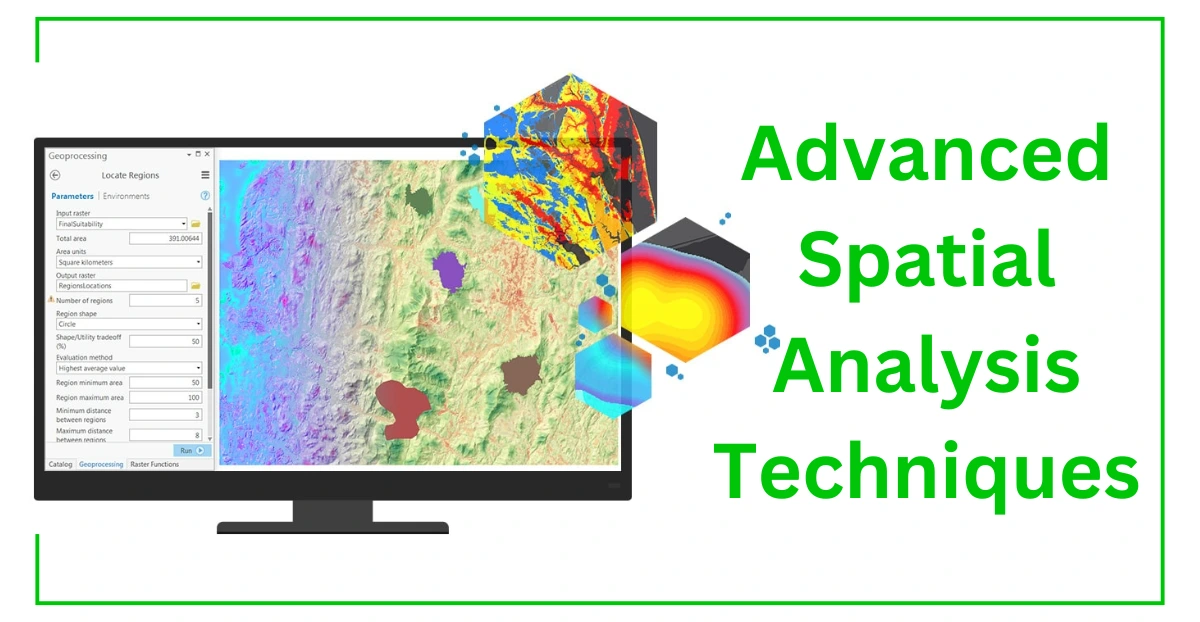In today’s data-driven world, making informed decisions requires more than just raw data; it requires the ability to extract meaningful patterns and insights from spatial data. This is where advanced spatial analysis techniques come into play. Whether you’re a GIS analyst, data scientist, or researcher, understanding these techniques can transform the way you interpret geospatial data. In this blog post, we’ll dive deep into the most powerful advanced spatial analysis techniques that can help you uncover hidden trends, optimize processes, and solve complex problems.
What is Spatial Analysis?
Spatial analysis involves examining the locations, attributes, and relationships of features in spatial data using statistical and computational techniques. It helps answer questions like “Where are the hotspots?” or “What is the best location for a new facility?” When it comes to advanced spatial analysis techniques, the focus shifts from basic querying to more complex, predictive, and inferential analysis.
Why Use Advanced Spatial Analysis Techniques?
As the volume and complexity of geospatial data increase, so does the need for advanced techniques. These methods allow analysts to:
- Identify Patterns that are not obvious through simple visualization.
- Predict Future Trends based on historical data.
- Make Data-Driven Decisions by leveraging in-depth statistical analysis.
Top Advanced Spatial Analysis Techniques
1. Hot Spot Analysis
Hot spot analysis identifies statistically significant clusters of high or low values. This technique is widely used in crime mapping, public health, and retail analytics to pinpoint areas of concern or opportunity.

Example: In public health, hot spot analysis can help identify areas with high incidence rates of a disease, allowing targeted interventions.
2. Spatial Autocorrelation
Spatial autocorrelation measures the degree to which similar values occur close together in space. It helps determine if the observed spatial pattern is random or if there is a relationship between the data points.
Example: In urban planning, spatial autocorrelation can reveal if property values are clustered due to certain factors like proximity to schools or parks.
3. Network Analysis
Network analysis examines spatial networks, such as transportation or utility networks, to solve routing problems, optimize logistics, and analyze connectivity.
Example: Logistics companies use network analysis to find the shortest delivery routes, reducing time and costs.
4. Interpolation Methods
Interpolation estimates unknown values at unsampled locations based on nearby measured values. Common interpolation methods include Inverse Distance Weighting (IDW) and Kriging.
Example: Interpolation is used in environmental studies to predict air pollution levels at locations where no direct measurements are available.
5. Multi-Criteria Decision Analysis (MCDA)
MCDA involves evaluating multiple criteria to make complex decisions. It’s particularly useful in site selection and land-use planning.
Example: MCDA can help determine the best location for a new hospital by analyzing factors like accessibility, population density, and environmental constraints.
6. Spatial Regression
Spatial regression models account for spatial dependency in data, providing more accurate results than traditional regression analysis.
Example: Spatial regression can be used in real estate to analyze the impact of location on property prices.
7. Geostatistics (Kriging)
Kriging is a geostatistical method that provides the best linear unbiased prediction of spatially distributed data. It’s highly effective for mapping continuous variables.
Example: Kriging is commonly used in geology and environmental sciences to create detailed maps of soil properties or pollutant concentrations.
Practical Applications of Advanced Spatial Analysis
Advanced spatial analysis techniques have numerous applications across various industries, including:
- Public Health: Identifying disease outbreak patterns.
- Urban Planning: Analyzing land use and infrastructure needs.
- Environmental Monitoring: Predicting climate change impacts.
- Retail and Marketing: Understanding customer demographics and optimizing store locations.
Tools and Software for Spatial Analysis
To effectively perform advanced spatial analysis, you need robust tools. Popular software includes:
- ArcGIS: Comprehensive GIS software with advanced spatial analysis capabilities.
- QGIS: Open-source GIS software ideal for complex analysis.
- Python with GeoPandas: For customized, script-based analysis.
- R with Spatial Packages: For statistical and geostatistical analysis.
Challenges in Advanced Spatial Analysis and How to Overcome Them
While advanced spatial analysis is powerful, it comes with challenges:
- Data Quality Issues: Incomplete or inaccurate data can lead to unreliable results. Use thorough data cleaning and validation processes.
- Computational Complexity: Advanced analysis techniques often require significant computational resources. Use efficient algorithms and leverage cloud-based solutions.
- Choosing the Right Technique: Each technique has its strengths and limitations. Understanding the problem context is key to selecting the most appropriate method.
Conclusion
Mastering advanced spatial analysis techniques is a game-changer for any GIS professional. By leveraging these powerful tools and methods, you can gain deeper insights, make better predictions, and drive data-driven decisions across various applications. Whether you’re tackling urban planning, environmental monitoring, or business analytics, these techniques will help you elevate your spatial analysis skills and deliver impactful results.
FAQ: Advanced Spatial Analysis Techniques
What are advanced spatial analysis techniques?
Advanced spatial analysis techniques involve complex statistical and computational methods used to analyze, interpret, and predict patterns within geospatial data. These techniques go beyond basic spatial analysis and include methods like hot spot analysis, Kriging, and spatial regression.
Why are advanced spatial analysis techniques important?
These techniques help uncover hidden patterns, make accurate predictions, and inform data-driven decision-making across various industries like urban planning, environmental monitoring, and public health.
What is the difference between basic and advanced spatial analysis?
Basic spatial analysis focuses on simple spatial queries, measurements, and visualizations. Advanced spatial analysis involves more complex statistical methods and predictive modeling to gain deeper insights from geospatial data.

2 thoughts on “Advanced Spatial Analysis Techniques”